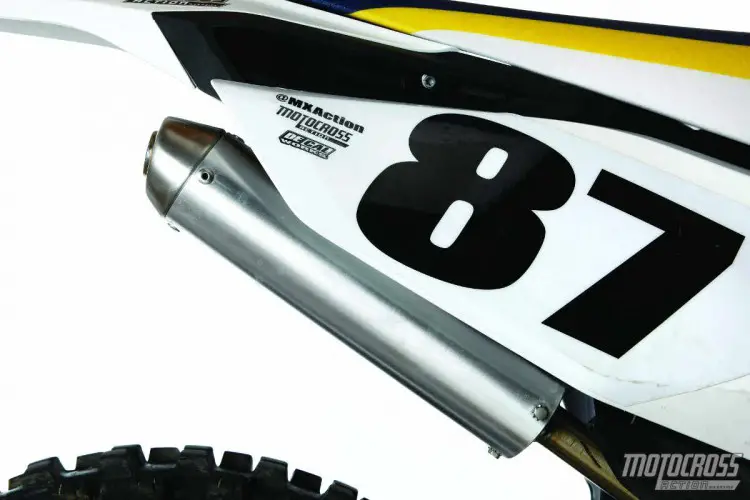MXA TEAM TESTED: BILL’S PIPES MX2 HUSQVARNA TC250

WHAT IS IT? Bill’s Pipes has long been synonymous with two-strokes. Missing from the scene for a few years, Bill’s is back with a new line of exhaust systems.
WHAT’S IT COST? $249.99 (pipe), $119.99 (silencer).
CONTACT? www.billspipes.com or (951) 371-1329.
WHAT STANDS OUT? Here’s a list of things that stand out with the Bill’s Pipes MX2 Works exhaust.
(1) Bill’s Pipes. Bill Cervera built pipes for Team Honda, Yamaha and Suzuki and for riders like Damon Bradshaw, Doug Henry, Steve Lamson and Travis Pastrana. Bill was on the same level as Pro Circuit and FMF, but when four-strokes took over, Bill’s Pipes wasn’t ready for the transition. Now Bill has partnered with the new owners of Big Gun and has been working hard to rebuild the Bill’s Pipes brand.

(2) Construction. Bill’s unplated, works-style, MX2 two-stroke pipe is made with 19-gauge AKDQ carbon steel. It is hand-welded and -assembled for a precise fit.
(3) Installation. MXA’s Bill’s pipe slipped onto our Husqvarna TC250 like butter. It uses all the stock hardware, and everything lined up with precision. There was absolutely zero guesswork.
(4) Stock performance. In stock trim, the Husqvarna TC250 has a smooth and manageable powerband. The bottom-to-mid power has enough oomph out of corners that the clutch doesn’t have to be abused to stay on the pipe. The power from mid to top is very linear but lacking in hit. Equally odd, when the power is wound out, the power curve falls on its face. Short-shifting is a necessity between gears on the stock Husqvarna TC250. In a perfect world, we would like to have a bit more power all the way through, a harder hit and more over-rev.
(5) Bill’s performance. Bill’s Husqvarna TC250 pipe brought a big grin to our faces. Bill’s MX2 two-stroke pipe sounded crisp, and on the track it sounded even better. The first thing we noticed was a hard hit in the midrange that pulled to the top. This was a big improvement over the stock pipe. The Bill’s pipe did give up some power off the bottom, though, and this was an issue on tight tracks. In tight corners, test riders had to touch the clutch to stay in the meat of the powerband. The clutch helped ramp up the revs to get to the sweet spot quicker. This quick rev muted the added over-rev because we got to peak much quicker than on the stocker. Most test riders solved this problem by going one tooth larger on the rear sprocket to help get the bike into third gear sooner, which lessened the need to clutch it.
WHAT’S THE SQUAWK? On tight tracks, the loss of bottom-end power with the Bill’s pipe makes you keep a finger on the clutch.






Comments are closed.